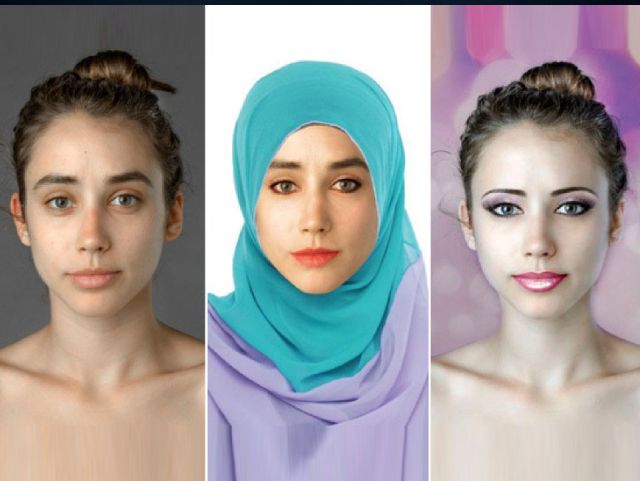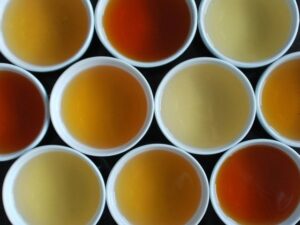Beauty is in the eye of the Beholder. Our perception of beauty is guided by cultural influences and ideas of aesthetics determined by fashion dictates of that era. Women, and sometimes men, often go to ridiculous lengths and a lot of pain to achieve that elusive beauty ideal. Is your idea of perfection worth the price?
The quest for perfect looks has been as old as time itself. However culture plays a huge role in our ideas of beauty. For instance, “youthfulness” is the beauty goal in America, while naturally flawless skin is the beauty ideal in Europe. Fairness is coveted in most Asian countries. A voluptuous figure, long bouncy hair and tanned skin is considered beautiful in Brazil. Having a slender figure is considered an important beauty criteria is most parts of the world. However in Africa, a filled-out larger figure is considered beautiful. As the world becomes smaller and connectivity improves, people began associating beauty with happiness and prosperity. As a result of which, women from the East began to covet the Western ideal of beauty. Being tall, fair, slender, having light eyes and light hair, and Aryan features became the platinum standard for beauty.
Women across the world have been experimenting with cosmetics and beauty aids since time immemorial. The goal is to appear sexually attractive in order to attract the most suitable mate as a provider for one’s yet-unborn progeny. There are social and financial connotations as well. We take a lot of effort to beautify and alter our appearance in order to appear more affluent and sophisticated. Religion influences beauty as well. Hinduism always portrays its Goddesses as beautiful. Therefore being beautiful is considered a godly quality. In fact, courtesans were often depicted in the nude in Hindu art. The Abrahamic faiths on the other hand, abhor nudity and stress on chastity and the veil. Sikh men and women are not allowed to cut their hair.
Every era in history has held its own standards of what is and is not accepted as beautiful. In the early nineteenth century, European explorers expressed horror and disbelief at the tattoos, piercings and feather decorations of the natives. They considered it savage and barbaric. However they considered their own top hats, powder wigs and corsets as high fashion!
Let us go back in history to understand our obsession with being pretty.
Various cultures have used their own indigenous cosmetics. Egyptians used powdered coal to beautify their eyes, and henna to give colour to their lips and nails. Razors and pumice stone were used by men and women to clean their heads bald, and use beautiful wigs instead. A face pack made of olive oil, incense, crushed cypress and wax was left on the face for 6 days to reduce wrinkles. Baths and hamaams became popular. Unlike Europeans, Egyptians had high regard for cleanliness and hygiene, and bathed every day.
The Hebrews and Arabs were conservative with cosmetics as their Prophets looked down upon self-adornment. But the use of henna, kohl, incense, aromatics and perfume was allowed and encouraged.
Greeks went easy on cosmetics as well. Makeup was only used by courtesans and prostitutes. They made emollients using beeswax, rose water and olive oil. Some centuries later, Ponds used the exact same formula to create the world’s first “cold cream”. The Romans were a lot more extravagant and experimental. Various cosmetics were used to beautify the skin, hair, bodies and nails. Light hair was coveted, and women used various dyes and bleaches to beautify their hair. However, this often led to severe hair damage and baldness.
African men and women used lye to relax and straighten their hair. The lye would often burn their scalp and eyes. Black leaders like Malcolm X and Martin Luther King often extolled their black brothers to quit using lye as it indicated a slave mentality and self-loathing.
Long beautiful and painted nails were a sign of beauty and wealth in China. Japanese Geishas used extreme beauty practices to paint their faces and body white. Boiling wax was used to coat the hair into elaborate, decorative and appealing styles which would stay in place all night.
And then there are countless examples of the painful and absurd lengths to which women went, in their quest for beauty and fashion.
During the Renaissance, elite European women plucked out their hair, one by one, from their natural hairline all the way back to the crowns of their heads, to give themselves the high, rounded foreheads which were considered beautiful and aristocratic at the time. Bare eyebrows were considered lovely as well. Think of Queen Elizabeth and the Mona Lisa with their bare brows and high foreheads.
In the Elizabethan age, women wanted to achieve the porcelain pale looks of their virgin queen. They whitened their skin using ceruse, a potentially lethal combination of vinegar with white lead. The lead powder gradually began to eat away at Queen Elizabeth’s skin, leaving pits and scars. She in turn would use even thicker layers of lead foundation to cover up the scars. Over the years, the damage was so extensive that she ordered all mirrors to be taken out of the palace. It is said that at her death, Queen Elizabeth was wearing an inch and a half thick layer of makeup!
In China, upper class girls would get their feet tightly and painfully bound, folding the bones, breaking them, crippling them and permanently stunting their growth to a mere 3 or 4 inches, which were considered beautiful and elegant.
The Padaung women (Burmese migrants to Thailand) are often referred to as “giraffe women” because of their custom of placing rings around their necks, starting in childhood to the time they are married. The pressure and weight of the rings, often crossing 10 pounds, force their necks into elongation. Without the rings, their neck would not be able to support their head.
In Central Africa, the Mangbettu tribe tightly wrapped the heads of female infants in pieces of giraffe hide, to attain the elongated cone-shaped heads that were considered a sign of beauty and intelligence.
Lip plates are used by some African tribes. Young girls use round wood or clay trays and place them between the lower lip and gums for years together. The plates keep getting larger with the years and the lower lip is elongated to grotesque proportions.
In Papua New Guinea, Ethiopia and Sudan, “scarification” is a beauty as well as an initiation ritual. The skin is cut using bamboo slivers and several cuts are placed along the trunk and buttocks to form various designs. Sap and ash are rubbed into the cuts to make them heal into bumpy scars, which form the designs.
The Kayapo people of the Amazon used piercings, tattoos and different hairdos to distinguish social and age classes and woo potential mates.
Women have gone to great lengths to lose weight as well. From “blood-letting” to swallowing tapeworms!
If you think these ancient tribal rituals are extreme, ignorant, backward and barbaric- then think again. Modernsociety is witness to women who refuse to eat for fear of obesity – The Anorexics. There are those who love food and allow themselves to binge. only to stick a finger into their throat to puke the food out. Or resort to laxatives and enemas to purge themselves skinny – The Bulimics. There are those who inject several litres of silicone into their bodies to achieve breast and butt enhancement. We inject ourselves with venom (Botox) and get multiple painful plastic surgeries done to achieve the perfect nose, jaw line or hairline! Women of colour still use toxic mercury and arsenic to lighten their skin. While pale women risk skin cancer by spending several hours of their life laying down in tanning booths. The tattoo is as popular in the States as it is among certain South American tribes. Several people still continue to pierce their tongues and genitals. We still covet Barbie doll’s impossible figure. We are still using fish to eat away the dead skin from our feet. And bird’s feces to exfoliate dead skin on our face!
Times have changed but the motivation and the desire to always remain youthful and attractive remains. Society and the whims of fashion and cosmetic industry giants dictate the rules of attractiveness. The aim of this article was to bring to your note, that beauty is ultimately perceived in the eyes of the beholder. While symmetry and mathematical proportions do influence the human brain into identifying a face as attractive or otherwise, the more “average” one’s features are, the more beautiful it appears. What is considered beautiful today, may be ridiculed tomorrow. When society changes, so does our perception of beauty. What will be the next definition of beauty a 100 or 1000 years from now? Your guess is as good as mine.




